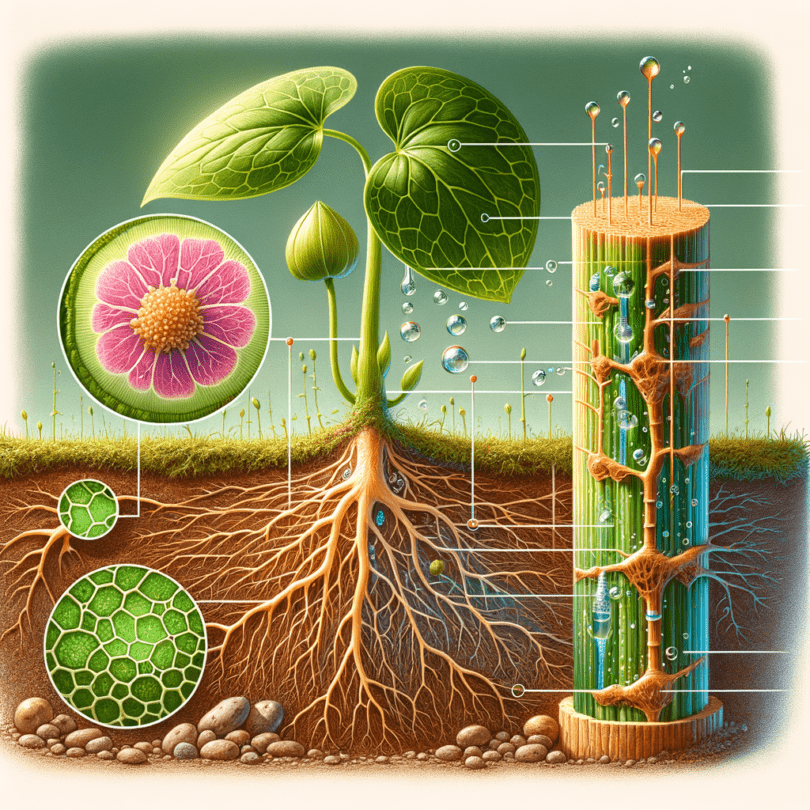As I sit here sipping my hot cup of tea, I suddenly get this wild, almost surreal realization about just how miraculous the world of plants is. Really, have you ever stopped to think about how these green friends outside your window manage to stay hydrated without so much as a straw, let alone a mouth? It’s like they’re in on some magical secret, sipping away in silence almost audaciously. It’s just so fascinating, isn’t it? The magic behind it? Oh, it’s this thing called capillary action. Sounds all scientific and fancy, but really, it’s just nature’s way of pulling off a little trick with water.
The Magic Behind Capillary Action
Okay, let’s not get swept away by big words and keep this simple. Capillary action is basically water giving gravity the cold shoulder. It’s like, “Nah, I’m not bound by your rules.” Water molecules clinging to the walls of a teeny tiny tube pull themselves up, and as they do, they give their fellow water molecules a lift, too. It’s all thanks to this combo of surface tension and something called adhesion. Sounds fancy, but it’s just water and chemistry getting cozy to work a little magic.
Want to try it yourself? You don’t need a lab coat or crazy equipment. Just get some string and water. Dip the string in water, and watch as the water creeps up. Yep, that’s capillary action at its finest. Plants have their own little versions of these straws called xylem, whisking water from root to leaf like an in-house botanical spa service.
How Do Plants Tap Into Water?
Honestly, it’s like plants are pulling off magic tricks with the way they use xylem, working as their trusty magic wand. These tiny channels ferry water and vital nutrients from the depths of the root right out to the plant’s furthest fingertips and beyond. The roots? Ah, they slurp up the water through osmosis, with minerals playing the role of the eager hitchhikers, hitching a ride up the xylem to help the plant grow and thrive.
It’s like they have this incredible, flawless, and tireless system that nature’s masterminded to work around the clock without ever needing a recharge. Imagine if plants had low-battery warnings! Sheesh, the panic!
The Role of Root Pressure
Now, have you ever seen plants with little water droplets trickling off them? That’s root pressure working its tiny yet mighty magic. As water enters the roots, it builds a tiny bit of pressure that gently nudges the water onward through the plant. While it’s not the primary water mover, it sure gives capillary action a helping hand, making sure no plant goes thirsty.
Especially, you’ll notice this in wee little plants early in the morning when nature is calm and everything’s just right. If you hang around your garden at dawn, you might catch a glimpse of how tirelessly your precious plants are working away.
The Power of Transpiration Pull
But let me tell you, the big hero in this plant hydration saga is transpiration pull. Sounds kind of mysterious, doesn’t it? But what it all boils down to is the water loss through itty-bitty leaf pores called stomata. Every time water vaporizes, it triggers a vacuum that draws more water upward, like a nutrient elevator making its rounds.
And the stomata? They’re like tiny plant monitors, deciding when to open and close based on how thirsty the plant feels. It’s the plant version of budgeting, keeping tabs on hydration reserves and knowing when to hit the brake. Gotta love nature’s genius in building such a meticulously self-sufficient mechanism.
Environmental Factors Playing the Hydra Game
Of course, all of this doesn’t happen in isolation. Let’s not forget how weather swings affect this whole watery ballet. Just like us, plants are at Mother Nature’s mercy. On those blazing summer days when plants are losing water faster than they’re sipping it, they have to up their game to balance it all out and stay dew-licious.
It’s akin to running a marathon, and the only drink you get is through a small straw. Now that’s a tough gig, right? So, plants constantly adjust to their surroundings, each species having its distinct strategies for mastering their liquid lifeline.
Humidity, salinity, temperature—they all play a role in how plants engineer their own unique watering systems. There’s always an ongoing chat between plant and the environment—an intricate dance that is as beautiful as it is complex.
Can We Mesmerize Plants?
Here’s a fun idea to ponder—could plants have a thing for certain water “flavors”? Sure, science doesn’t back this (yet), but imagine plants lighting up over crisp mountain water or acting all gloomy with tap water. Who knows? Maybe they do have water preferences, but they just keep it to themselves.
On the plus side, you won’t catch a leaf sipping on your fancy latte! But I do find myself wondering, if they had a choice, would they pick artisanal bottled water over a simple raindrop?
Plants—Nature’s Ultimate Survivors
Diving into plant hydration, it becomes clear how these green warriors really are the quiet champions of our ecosystems. They breeze through their complex processes while casually maintaining their “hydrate-or-endure” stance. I mean, it’s humbling, a reminder of the elegance and complexity woven into the natural world around us.
Imagine a world without plants—no oxygen, food, or many essentials we rely on daily—it’d be a rather dull, bleak place, right? It’s a delicate dance, this symbiosis between us and plants. It’s made me think hard about how much we need them and what we owe back to these silent but mighty friends.
So, next time you’re watering your plants, consider the awe-inspiring journey that water takes to nourish life. I mean, even the simplest wonders in nature come with their sprinkle of science magic. Keep that curiosity burning, fellow plant enthusiasts—there’s always more to discover in the everyday layers of life we see!

